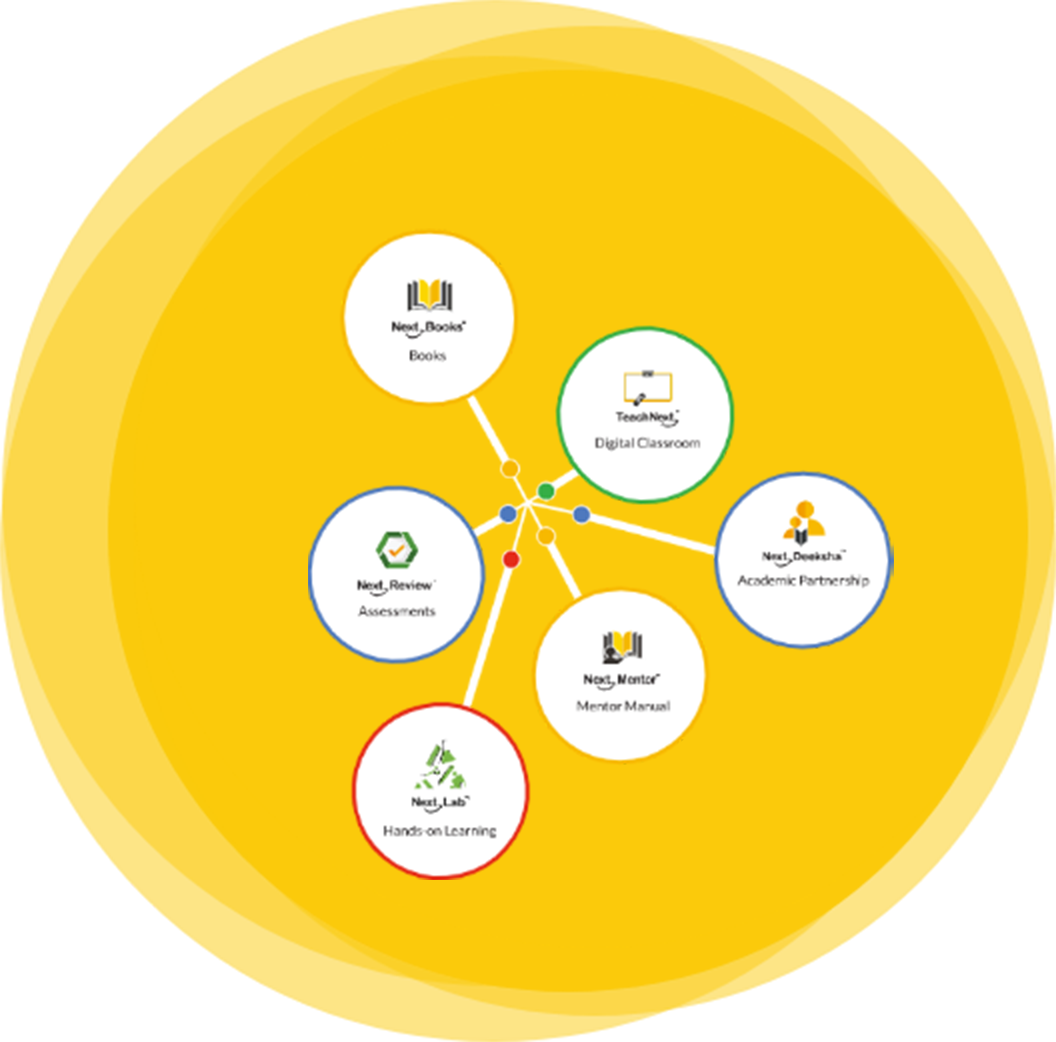Pre-Primary Curriculum
Our pre-primary curriculum is designed to develop a lifelong love for learning in learners aged 2.5 to 6. It also ensures a smooth transition to primary classes. Furthermore, it facilitates a balanced development in five key domains: physical, cognitive, emotional, social and linguistic. An age-appropriate progression in concepts along with various teaching methods such as worksheets for fine and gross motor activities, audiovisuals etc., ensures that all types of learners are engaged in learning.
-
Philosophy
Our curriculum is a quality pre-primary curriculum that is based on play and hands-on learning and piques curiosity in young learners. It has been created taking inputs from multiple studies from around the globe.
-
Focus
Our curriculum ensures a smooth transition to primary education and lays the foundation for lifelong learning.
-
Approach
-
Integration of the curriculum with TeachNext makes the characters in the textbooks come alive and makes abstract concepts meaningful.
The concepts are arranged in the curriculum to match the various stages of growth and development of a child.
Concepts are introduced and explained through real-life situations and examples so that the child easily understands them.
Integrates two or more concepts to teach a skill, enabling children to make meaningful connections.
Books, interactive audiovisual modules and multiple activities engage children in the learning process.
-
Primary to Grade 8 Curriculum
The primary and middle-school curricula adopt a thematic approach to establish real-life connections between the learner and their environment to create an engaging learning experience. Moving away from a teacher-centred approach and adopting a learner-centred approach leads to improved engagement, academic achievement and meaningful learning.
-
Philosophy
The curriculum follows a student-centred approach that places the child at the centre, with the teacher acting as facilitator. The teacher becomes more of an observer, giving the child the required space to learn and grow at their own pace and develop a love for learning.
-
Focus
The curriculum focuses on establishing a real-life connection with the learners' environment to make learning an engaging and effective experience.
-
Approach
-
Thematic learning through stories, poems, plays, non-fiction and infographics organised around clearly defined age-appropriate themes
Interdisciplinary learning allows students to revisit a concept or skill from different perspectives and learn beyond subject boundaries so that they can make connections between different areas of learning
Experiential learning through activities and projects that cater to multiple intelligences
Enquiry-based learning encourages students to pose questions, problems or scenarios and facilitates self-directed enquiry or research by the student
-
Secondary and Senior Secondary Curriculum
Secondary and Senior Secondary Curriculum
Our secondary and senior secondary curriculum prepares students to confidently face future challenges of higher education and professional life.
-
Philosophy
An ideal secondary and senior secondary curriculum should ensure a student’s holistic development and prepare them to confidently meet the challenges of higher education. Our educational solutions are designed to maximise the output of the learning process, ensure clarity of concepts, enhance critical thinking skills and independent research abilities, and above all make students ready to meet the challenges of the future.
-
Focus
The curriculum prepares students to meet the requirements of higher education. It is a blend of regional curricula and world-class teaching methods.
-
Approach
Our curriculum solutions ensure the smooth progression of concepts across grades. The teaching-learning methodology shifts from kinaesthetic to visual and aural as the grades progress. More theories and technical terms are introduced in the higher grades. The students at this stage are equipped with the skills to grasp them as they have been moulded well in the lower grades.

